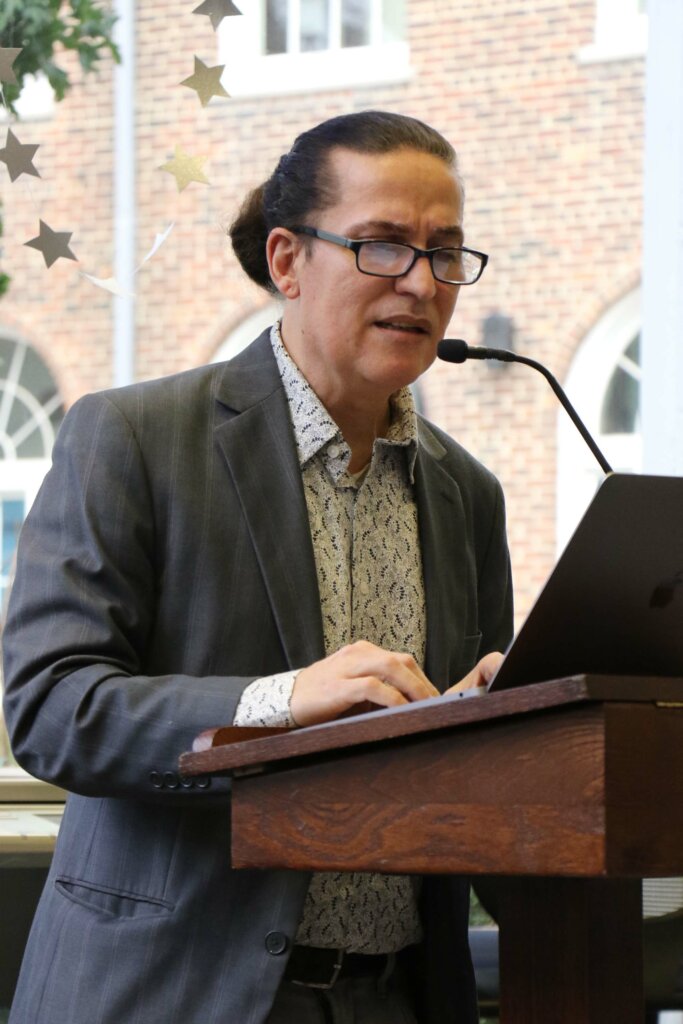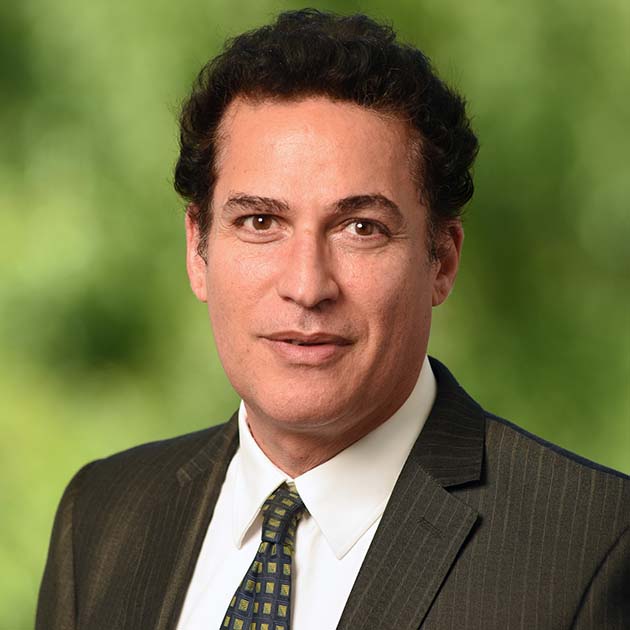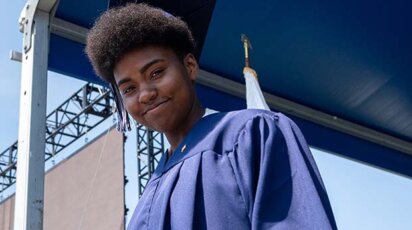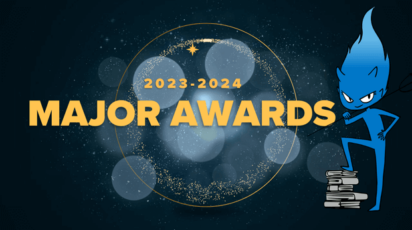News
Art & Science: Teacher Explores Jorge Luis Borges and Quantum Physics
The community gathered to hear World Languages teacher José Oliveras present his Miles M. Kastendieck Lecture in the Humanities on “Borges and Quantum Physics: A Literary Paradox” on February 24 in the library.
Introduction to the Kastendieck Lecture in the Humanities
John Rankin, Philosopher in Residence, opened the event, noting the Kastendieck Lecture has been presented for 39 years. Dr. Miles Kastendieck, for whom the lecture is named, retired from Poly in 1982 after 50 years as head of the English Department. He was also a well-known music critic and author. Rankin has said that over the years, the Kastendieck Lectures have “offered important scholarly moments for us, giving the teaching community a chance to think and reflect, as they listen and share colleague’s engagements with scholarship. The spirit of the lectures aims to foster a vibrant intellectual community by promoting research and engaging the community in the widest academic thought.”
World Languages colleague Maite Iracheta P’16 introduced Oliveras. In doing so, she noted her own experience teaching the work of Borges, who she called a “master of literary sorcery.”
About the Speaker
José Oliveras graduated from the University of Puerto Rico, where he studied journalism and theater, and continued his education in Spanish and Luso-Brazilian literatures at the City of New York Graduate Center. Oliveras joined Poly’s World Languages faculty in 1996 and has taught all levels of Upper School Spanish. He directed the Upper School plays for several years, ran the Argentinean Exchange Program for almost a decade, and has been the Editor-in-Chief of PolyText, our faculty and staff literary magazine. For the last 27 years, Oliveras has been the Artistic Director of Teatro Círculo, dedicated to the presentation of Spanish classical and contemporary Latin-American theater. Last fall, Oliveras received awards for his work as producer, director, and actor in Teatro Círculo’s Cervantes’ Interludes for Best Classical Production from both the Association of Critics of Entertainment (ACE) and the Association of Independent Theatres (ATI) and the Best Director and Best Actor awards from ACE.
The Connection Between Borges and Quantum Physics
In this year’s Kastendieck Lecture, Oliveras explored the correlations between quantum physics and some literary works by Jorge Luis Borges, an Argentine short story writer, essayist, poet, and translator, and a key figure in Spanish-language and international literature. Oliveras’ research for this lecture focused on an essential question proposed by scientist and researcher Alberto Rojo: Is there a space in which the what, and the how, the real and the imaginary, art and science can cohabit?
Is there a space in which the what, and the how, the real and the imaginary, art and science can cohabit?

Quantum physics is the study of matter and energy at the most fundamental level, the physical properties of nature at the most basic level. Oliveras traced the development of the study of physics—”the impulse to know the essential nature of all things”—from the Ancient Greek Heraclitus through Democritus and the concept of the atom, through Aristotle and spirituality, the Renaissance and evolution of scientific thought, to Faraday and Maxwell and the wave fundamentals of quantum physics, and then Einstein and the idea of a fourth dimension: space-time. Oliveras said that “atoms have a dual aspect” like particles and like waves. He added, “Nature shows us complicated relationships.”
“An abandonment of one reality and linear time…”
And, so, where does Borges come into this? Oliveras said that art and science are “parts of the continuum of the same imagination.” Borges had a “unique literary style,” which dealt in ideas of time, space, destiny, and reality. In his 1941 book of short stories, Ficciones, particularly his story “The Garden of Forking Paths,” Borges deals in multiple realities. Oliveras said, “The reader must always be alert to his elegant style.” Borges, Oliveras said, “wrote for himself and the intellectual audience.” Oliveras noted that in his 1949 writings, Borges anticipates the 1957 many-worlds interpretation of quantum mechanics by physicist Hugh Everett. In Borges’ work, there is “an abandonment of one reality and linear time” resulting in “possible realities that are unlimited and simultaneous.”
Oliveras asked Ron Sarcos P’26, another World Languages colleague, to read a poem, “Labyrinth,” by Borges, which includes the words, “Do not expect the rigor of your path, which stubbornly splits into another one, which stubbornly splits into another one, to have an end.” This, Oliveras said, shows the concept that “time is not linear.” Rather, time moves in random directions and “the restrictions of linear time do not exist.”
In a brief Q&A, Oliveras answered questions about his presentation noting, “Maybe everything is connected,” and added that perhaps Hamlet’s question of “To be or not to be?” should actually be, “To be and not to be?” Borges, Oliveras said, had the intention to make the reader doubt.
The next Kastendieck Lecture will be “The Fate of Democratic Education in a Deeply Divided Society” presented by Chair of the History Department Maggie Moslander.





